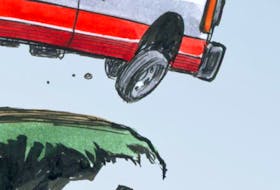TRURO, N.S. — Sometimes young animals need help, but more often they just need to be left alone. Knowing the difference can determine whether you save or endanger a life.
Wildlife centres are often contacted about fawns people believe need help. Does often leave fawns alone for most of the day. Because they have little scent, they’re safe from most predators. A healthy fawn found napping in the bushes is usually just waiting for its mother to return.
If a fawn has open wounds or broken bones, is crying out, is covered in insects, or if you know the mother is dead, the young one needs help. If you’ve found a fawn you are confident needs human help, contact Hope for Wildlife.
I had to pick up one fawn last year because she had been hit by a car and needed veterinary care. This animal was quickly moved to Hope for Wildlife where she received excellent care.
Fledgling birds are also often picked up when they’re best left alone. While a very young bird needs to remain in the nest, fledglings sometimes leave a few days before they can fly well. Their tail feathers haven’t grown out, but they can hop well and sometimes fly very short distances. Parents will continue to care for fledglings on the ground. You can watch from a distance to ensure they’re being cared for. Birds who do need help can be taken to the Cobequid Wildlife Rehabilitation Centre.
Keeping cats inside is important for the safety of all birds, but especially for young ones. It’s also much safer for the cats, who won’t be exposed to traffic, predators and parasites.
It’s also important to consider wildlife when removing trees or old buildings from your property. Waiting until nesting season is over can save lives.
Another problem this time of year is using live traps wildlife to move wildlife from an area. These animals may have young who are depending on them, and when the mother is removed the little ones starve or are killed by predators.
Although young animals are adorable and it can be tempting to keep them at home, it’s not a good idea. They require a lot of care and there are laws against keeping them as pets. If you do find a wild animal that needs help contact a wildlife rehabilitator. They have the knowledge and the equipment to give these animals the best care and the best chance of survival.

![["A fawn waiting for it's mother outside of a Truro home in 2016."]](https://saltwire.imgix.net/tn-21062017-deer-fawn.jpg?cs=srgb&fit=crop&h=568&w=847&dpr=1&auto=enhance%2Ccompress%2Cformat)







